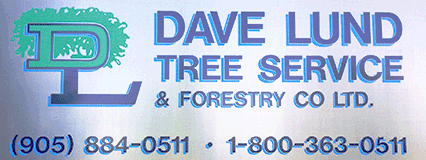The aftermath of natural disasters such as hurricanes, storms, and heavy rain can result in badly damaged infrastructures and community-wide wreckage. In the aftermath of such disasters, the first thing to do is to clean up the debris.
However, with the need for efficiency in the rehabilitation process, the community may decide that trees that have been injured or struck down should be removed permanently. These decisions could unnecessarily kill trees that could have been given a second chance.
Doing so will strip your community bare of the benefits that trees and greenery could provide. Instead of directly calling a tree removal service to wheel off the partially uprooted trees from your lawn, why not consider calling an arborist that could help you conduct first aid on them?
First Aid Tips
Conduct your own tree rehabilitation project with these basic first aid steps:
- Safety First

Before approaching the tree and applying direct first-aid, you have to evaluate the situation and whether it’s safe for you to get close. Try to scan the surroundings and be vigilant for potential risks such as low-hanging wires, downed utility lines, active telephone cables, and electrically charged fence wires.
As you draw near the tree for further inspection, never stay under broken branches due to the risk of sudden breakage and falling debris. Avoid cutting any wires to untangle the tree, rather try to cut off parts of the branches.
You can do this with shears, axes, or a chainsaw. Just remember to wear the proper gear and a hard hat, if possible, to protect your head from falling branches. If you don’t know how to use any of the aforementioned tools, you should hire an expert from a tree service company to do it for you.
- Don’t Do it Alone
Pruning and untangling a tree after a storm involves multiple factors and hazards. It is not a one-man job. A collective effort is necessary if you want the job done safely and successfully.
If large branches are hanging or broken, then you should hire a professional arborist to look after the task to prevent these objects from falling onto your property or on passersby. They can also conduct additional check-ups in other areas of your lawn and help you pinpoint underlying risks.
- Detach Broken Branches
Broken branches and exposed vascular bundles in trees are akin to a cut or wound. These open areas are susceptible to infection and decay, which can endanger the entire health of the tree within days. They can also fall on you or your family and cause injury.
To minimize the risks, make sure to remove hanging branches. Through thorough pruning and branch removal, you may be able to save the tree from infection, prevent further damage, and protect your household.
- Mend the Bark
Lacerations and cuts on your tree’s bark can act as hiding places for insects and fungi. After the storm, if your tree has been severely injured, make sure to smoothen the rough edges with a chisel or knife so any micro spaces will be removed.
However, you have to be careful that you don’t remove the cambium or inner bark of the tree as these are fragile layers of vascular bundles that carry nourishment and water around the system. Over scraping may lead to further damage and decay.
- Don’t Overprune

After you’ve pruned a storm-damaged tree, it may seem bare and displeasing to the eye. You might be tempted to remove more branches to make it look more balanced, but you should only remove the damaged branches.
This is not hedge trimming, where you can shape the tree into whatever form you want. The process has to be organic. Overpruning will only delay its healing process and expose it to more risks. Your tree will certainly grow fresh foliage within a week, returning to its original arboreal beauty. You can always consult an expert on tree pruning to do this job for you.
- Don’t Top the Tree
The act of “topping” trees refers to the cutting of main branches into their basic stump shape, to help the tree start anew.
However, this process is considered to be a damaging technique to a wounded tree as it will reduce the foliage and impede its ability to nourish itself, which can slow down recovery and healing. Using this method will lead to stunted growth and prevent the tree from going back to its original beauty.
Helping a Tree Recover
Unlike other organisms that can regenerate certain cells when they’ve been injured or wounded, trees tend to seal off the infected area with fresh bark. This is a natural mechanism that allows the tree to protect itself from fungal invasions and bacterial infections. However, for a storm-damaged tree, the mere volume of cuts may be too much for its system to manage.
That is where human intervention comes in. You can apply wound dressings, cavity fillings, wound pruning, and extra fertilization. Your main goal is to help the tree seal the exposed vascular bundles while adding more nourishment. Consult with an arborist to boost the chances of successfully aiding your tree.
Storm-damaged trees should be given a second chance to thrive. However, before you consider the potential of rehabilitating an injured tree, you also have to assess whether it’s a hazard or not.
Having it grow back again may only cause it to topple down in the next storm and cause further accidents. But fortunately, you can always hire experts to prevent these mishaps. For tree tips and services, contact Dave Lund Tree Service and Forestry. We offer various tree services like tree pruning, removal, and root feeding & aerating to name a few. Call us now at (905) 884-0511.

